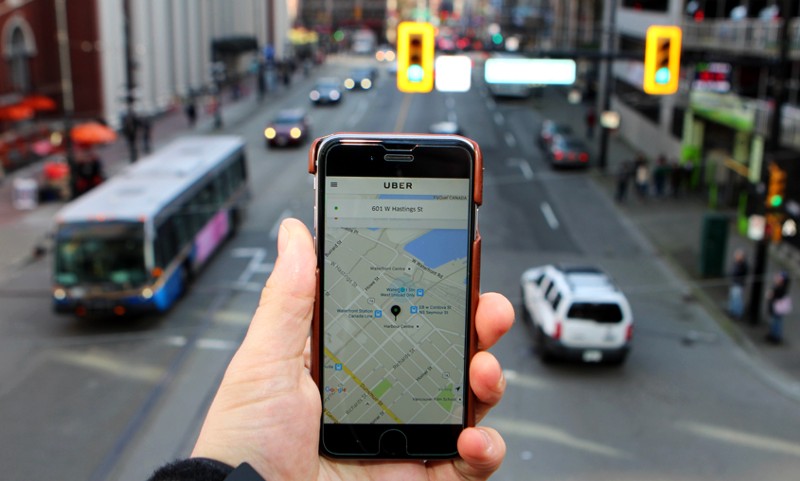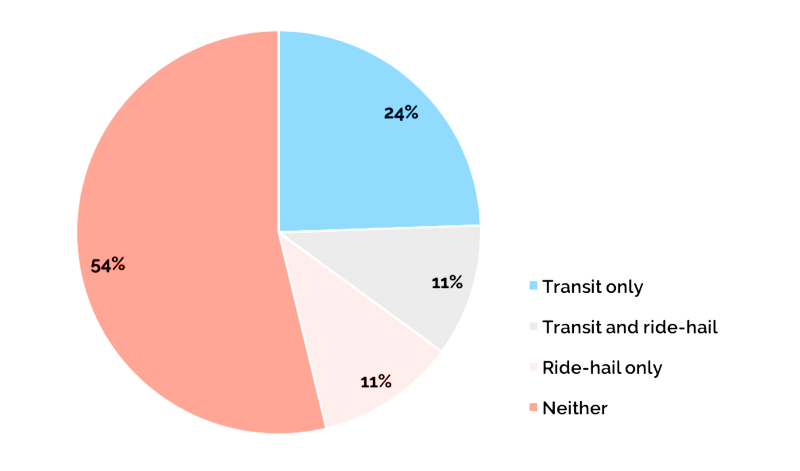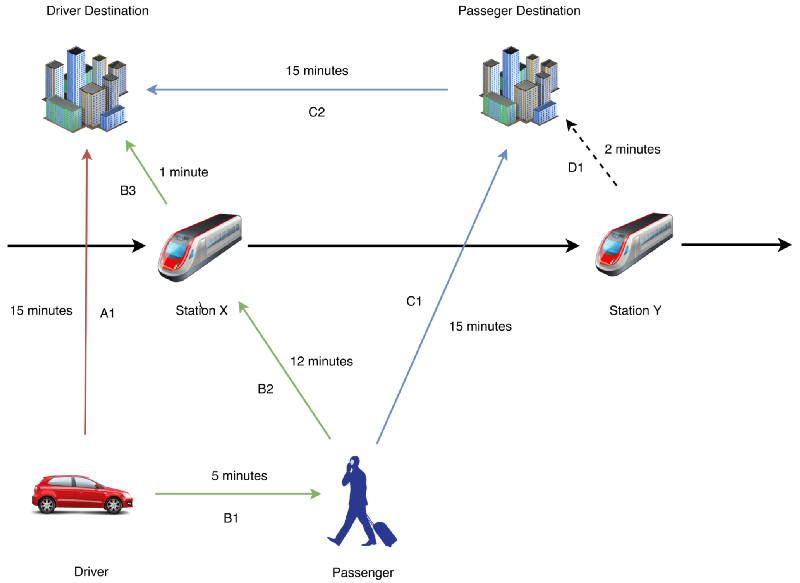
“Bike-share and car-share programs are springing up everywhere. Cities are innovating and trying to be more agile with public transportation. On-demand systems like Uber and Lyft are becoming popular” says Samitha Samaranayake, Professor at School of Civil and Environmental Engineering at Cornell Univeristy. “Many people in urban environments are rethinking the need for personal vehicle ownership” he maintains. “Combine all these with the data we can collect in real time from smart phones and internet-enabled devices and you have a real opportunity to create some great solutions”.
Most of the people all around the world use private cars to travel to work, to accomplish day to day routings. However, most of the commuter trips are single occupant vehicle trips. A recent study indicates, in United States only, single occupant trips represent approximately 77% of all commuter trips. While it seems like single commuter trips are often preferable by the general public, this indeed has led to many serious problems with referenced to traffic congestion. The low vehicle occupancy rates combined with the high number of trips during peak hours often lead to severe traffic congestion in urban areas. The cost of congestion in the United States alone is roughly $121 billion per year or 1% of GDP, which includes 5.5 billion hours of time lost to sitting in traffic and an extra 2.9 billion gallons of fuel burned. This just not waste the human time but also leads to many environmnetal and health hazards like air pollution caused by vehicle emissions and many serious negative health effects.
Ride sharing services are transforming urban mobility by providing timely and convenient transportation to anybody, anywhere, and anytime. Conceptually, ridesharing refers to a mode of transportation in which individual travelers share a vehicle for a trip and split travel costs such as gas, toll, and parking fees with others that have similar itineraries and time schedules. Over the past few years it is pretty much evident that ride sharing services such as Uber and Lyft have got a major popularity within urban mobility groups.
“Ride-sharing services have enormous potential for positive societal impact with respect to congestion, pollution, and energy consumption” says Professor Daniela Rus, director of MIT’s Computer Science and Artificial Intelligence Laboratory (CSAIL).
Refer figure 1 for a graphical illustration of vehicle shedding, with the ride-hailing utilization rate in USA.

Figure 1 : Vehicle shedding, by ride-hailing utilization rate in USA (source)
While ride sharing services have been able to retain a solid market foundation with daily increasing urban mobility needs, it is worthy to see the negative effect of it as well.
A study done by the University of California-Davis Institute of Transportation Studies have found that after adopting ride-sharing services, there was a net 6% decline in use of transit, based on changes in travel behavior of the study respondents.
Below figure illustrates the impact that has caused by adaptation of ride-hailing services in USA towards the transit use, biking, and walking.

Figure 2 : Changes in transit use, biking, and walking after adoption of ride-hailing services in USA (source)
“Data across the country has made it pretty clear that there are aspects of ride-hailing that are directly competitive with transit,” said Kyle Whitehead, government relations director with the Active Transportation Alliance, which advocates for transit, bicyclists and pedestrians.
The below figure depicts how the mobility modes vary within the general public in USA. Refer below for definitions of each term.

Figure 3 : Segments compared: transit only, transit and ride-hail, ride-hail only, and non-users of shared mobility in USA (source)
Transit and ride-hail : people who use transit in the ways described above, and who have downloaded and use a ride-hailing app.
Ride-hail only : people who have downloaded and use a ride-hailing app, and who do not use transit regularly for common trip-generating activities.
Neither : people who do not use transit regularly and who have not used a ride-hailing app. For the most part, these are car-centric respondents.
An integration of public transit and mobility on demand services could be an ideal solution to keep the genaral public encouraged to use mass transit and to reduce the negative externalities of car travel. However, the inherent challenges in built to this initiative could lag this from implementation in reality. Public transit may not be economically viable in certain suburban and rural areas as they lack the population density to justify public transit. Hence, to attract more riders from suburban areas to public transit, authorities must find adequate solutions to accommodate the first and last mile from the rider’s home to and from the transit stations. One possible solution could be to operate a fleet of demand-responsive vehicles with collaboration of local mobility on demand service providers. This indeed provides value and benefits to both the parties involved. Consider the below example to understand the scenario better.

Figure 4: Example of integration of public transit and ride sharing
In the above figure, the driver is initialy travelling to his destination (Driver destination) and the passenger wants to travel to his destination (Passenger destination). There are two transit stations X and Y. Each edge has a time value assocaited with it which depicts the time it takes to go from given source to given destination. Note that A1, B1, B2, C1 and C2 are drivable roads where D1 is a walkable only road. Assume that the driver is willing to accept a trip if it will cause an increase in trip time of at most 5 minutes and passenger is willing to have a total travel delay of 5 minutes. A train takes 5 minutes to go from one station to another.
It is evident that the driver can not server the passenger directly since it will cause the driver to have a increased trip time of 20 minutes if to drop the passenger at his destination first (B1 + C1 + C2 — A1). However, if the passenger is willing to take the transit line from X to Y and walk 2 minutes to his final destination, a feasible match between the driver and the passenger is possible, as the the driver has to make a smaller detour of 3 minutes (B1 + B2 + B3 — A1). This will not cause the passenger to violate his total travel delay as he will only have a delay of 4 minutes (B1 + C1 — B1 — B2 — transit time — D1).
Adopting an intergration of public transit and mobility on demand systems has its own set of benefits for all the parties involved. There are potential public benefits such as the hope of increased ridership, better service for hard-to-serve areas and cost efficiencies. The strong competition could push the slow-moving transit agencies to innovate and improve and ultimately result in providing a seamless transit service. The public transit providers will have to cooperate with other stakeholders and offer additional benefits to drivers who are willing to accommodate riders. These might come in the form of a free park-and-ride ticket, a toll waiver, an HOV lane permit, or priority parking in the city center.
It should not be forgotton that there are also associated risks as well. Ride-sharing companies have devastated the private taxi market, effectively undercutting the entire industry in some cities. The latest victim: Yellow Cab,the largest taxi company in San Francisco. The recent Mobility rights advocates and transit employees fear the same thing could happen to public transit, remaking, under private ownership.
Thus, even though the integration of a ride-sharing system and a public transit system can significantly enhance urban and rural mobility, encourage the use of public transport, and reduce the negative externalities associated with car travel, if we are to achieve that future in an equitable and effective way, these partnerships must be executed in a careful, cooperative and accountable manner.
Reference
- http://usa.streetsblog.org/wp-content/uploads/sites/5/2017/10/2017_UCD-ITS-RR-17-07.pdf
- http://theconversation.com/can-public-transit-and-ride-share-companies-get-along-64269
- https://www.sciencedirect.com/science/article/pii/S0305054817302228
- http://www.govtech.com/fs/transportation/study-ride-sharing-decreases-public-transit-use.html
- http://www.pnas.org/content/114/3/462
